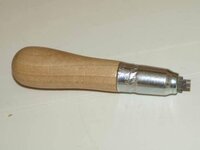Sorry to hear about this. I have had this sort of problem before
I think where you are now, there are four options
1. Get Andy at Pinball Mania out to your game (or take it to him to save the call out fee). Or at least send him your elektra mpu board for testing and repair
2. Get someone else on here to give you a hand
3. Swap known working boards from your medusa into elektra if you are happy to do this yourself. Obviously the risk here is that you take medusa out too!
4. Buy a known working mpu board, or buy/ borrow an altek mpu. ALtek mpu boards make sense if you plan to own a few bally ss pinballs for years. You can swap them between games without needing to insert game roms or change jump settings. So they are good for diagnosing faults
You might have a faulty mpu or solenoid board, my guess would be mpu. I think these are the same boards as in your medusa. Medusa and elektra are from the same era, so should have common mpu and solenoid boards (check by looking at the part numberers on the boards)
If i were you, i would Swap the solenoid boards between the two games, to eliminate whether this was the source of the trouble. THis is easy enough
Then you need to get a known working mpu board into elektra, to see whether Elektra's mpu board is failing
You could put the medusa mpu board into elektra. The problem here is that this is not just a board swap and there is risk of collateral damage.
1. You need to write down the dip switch settings that existed on medusa and elektra
2. Put the elektra dip settings into medusa
3. Put the medusa game rom into elektra. Remove the elektra rom and insert the medusa rom very carefully. IF you are not careful you could snap legs off or insert incorrectly, which will fry the rom
4. Make sure that the jumper settings on the medusa mpu are the same as on elektra. Write down the medusa jump settings before you change them. This could mean soldering the board, with risk of damage
http://techniek.flipperwinkel.nl/ballyss/rep/index3.htm
5. Insert the board into elektra
Some settings lke the sound are done by using the test menu rather than the dip switches , so the game will sound different as these are forgotten when you swap mpu boards over. You just go through the test menu to about 17 or so (elektra manual will tell you)
Good luck


